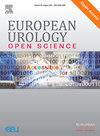Nephrometry Scores Based on Three-dimensional Virtual Models Improve the Accuracy of Predicting Postoperative Complications After Robotic Partial Nephrectomy: Results from a Collaborative ERUS Validation Study
IF 3.2
3区 医学
Q1 UROLOGY & NEPHROLOGY
引用次数: 0
Abstract
Background and objective
The aim of our study was to compare assessment of PADUA and RENAL nephrometry scores and risk/complexity categories via two-dimensional (2D) imaging and three-dimensional virtual models (3DVM) in a large multi-institutional cohort of renal masses suitable for robot-assisted partial nephrectomy (RAPN), and evaluate the predictive role of these imaging approaches for postoperative complications.
Methods
Patients were prospectively enrolled from six international high-volume robotic centers, calculating PADUA and RENAL-nephrometry scores and their relative categories with 2D-imaging and 3DVMs. The concordance of nephrometry scores and categories between the two approaches was evaluated using χ2 tests and Cohen’s κ coefficient. Receiver operating characteristic curves were plotted to assess the sensitivity and specificity of the 3DVM and 2D approaches for predicting the occurrence of postoperative complications. Multivariable logistic analyses were conducted to identify predictors of major postoperative complications.
Key findings and limitations
A total of 318 patients were included in the study. There was low concordance for nephrometry scores and categories between the 3DVM and 2D assessment methods, with downgrading of PADUA and RENAL scores on 3DVM assessment in 43% and 49% of cases, and downgrading of the corresponding categories in 25% and 26%, respectively. Moreover, 3DVM assessment showed better accuracy than the 2D approach in predicting overall (p < 0.001) and major (p = 0.001) postoperative complications. In line with these findings, multivariable analyses showed that 3DVM-based nephrometry scores and categories were predictive of major postoperative complications (p < 0.001). Limitations include the risk of interobserver variability in evaluating nephrometry scores and categories, production costs for the 3DVMs, and the experience of the surgeons involved, with potential impacts on diffusion of this technology.
Conclusions and clinical implications
In this multi-institutional study, 3DVMs had superior accuracy to 2D images for evaluating the surgical complexity of renal masses and frequently led to downgrading. This could facilitate an increase in recommendations for kidney-sparing surgery and better identification of cases at risk of postoperative complications.
Patient summary
Our study shows that the use of three-dimensional models gives lower complexity scores for kidney tumors in comparison to standard two-dimensional scans. This can improve surgical planning and may boost the use of kidney-sparing techniques and better identification of cases that are more likely to have postoperative complications.
求助全文
约1分钟内获得全文
求助全文
来源期刊

European Urology Open Science
UROLOGY & NEPHROLOGY-
CiteScore
3.40
自引率
4.00%
发文量
1183
审稿时长
49 days
 求助内容:
求助内容: 应助结果提醒方式:
应助结果提醒方式:


